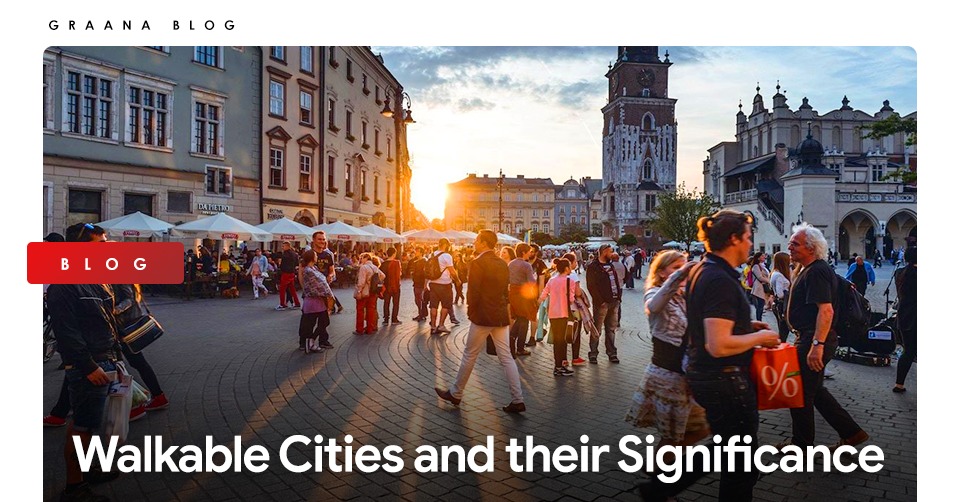
The contemporary scholarship on Urban Planning has immensely focused on the need for walkable cities. Owing to the heavy costs associated with the contemporary designs of the cities and the increasing urban sprawl, the designs of the cities are reimagined. The time we spend in vehicles to reach our destinations grows day by day, and the cities’ centres are becoming distant. This concern can be found in the explanation that our cities are built for cars rather than giving walking and bicycle tracks a space.
Graana.com, through this blog, highlights the concept of ‘Walkable Cities’, which are becoming a major focus of urban planning in the cities. The heavy reliance on vehicles does incur environmental costs in terms of carbon emission and health-related issues. Hence, the new thinking on cities gives special attention to the concept of walkable cities.
Jeff Speck is the major proponent of Walkable Cities, who has proposed various urban designs for making cities more conducive to walking, bicycling and mass transit. The name may be misleading; however, mass transit and public transport are significant components of walkable cities. The concept revolves around including more pavements and bicycle tracks to encourage people to walk and negate vehicle usage. Simultaneously, walkable cities also negate adding more roads which are often thought of as a panacea to resolving the traffic congestion issues. However, urban planners agree that there is no correlation between highways and traffic congestion. The concept of walkable cities can be best applied to the cities planned on the concept of ‘traditional neighbourhood’ and ‘suburban’ sprawl.
Bicycles enjoy a dominant position in walkable cities, and it is one of the major means of transportation in the walkable city. There is a need to dispel the notion that cycling has become a redundant means of transport; this is not a true way of assessing things. In light of the growing concerns pertaining to climate change, cycling is gaining unusual importance since it is a tool for decreasing carbon emissions and promoting sustainable modes of transportation. Hence, the infrastructure of walkable cities emphasises including separate bicycle tracks equivalent to those of cars since short distances within the cities can easily be covered through bikes.
Another tenet of the walkable city that can make the cities more human-centric and respond to the walkers is the development of pavements. The new urban planning can respond to this idea conveniently as walking is a fundamental aspect of daily life. In order to shift the reliance on cars and look for perpetual solutions, incorporating pavements in urban design can help promote a healthy lifestyle. It has been proved in the studies that the cities that promote walking spend less on diseases related to obesity and cardiovascular diseases. Similarly, the costs incurred on the vehicles and maintenance can be spent on the well-being. Therefore, the advantages of walkable cities are multi-faceted.
By this time, a question may have appeared: how to move at large distances? For that purpose, a conventional solution is given in public transport. Public transport supplements walkable cities in terms of travelling long distances. Public transports in the cities have been advancing technology in new and modern forms. Every day a mass movement of people is observed in Tokyo, Japan, where people move to the long distances. In such cases, the affordability of public transport is the primary determinant in the success and attracting the people.
ISLAMABAD: The Capital Development Authority (CDA) is looking to the federal government for an additional…
ISLAMABAD: The Capital Development Authority (CDA) and the Asian Development Bank (ADB) have entered into…
Islamabad: The Capital Development Authority (CDA) has announced plans to issue possession letters to allottees…
Islamabad, [24 March 2025] – Graana.com, Pakistan's leading online real estate marketplace, is proud to…
Islamabad, Pakistan – March 2025: Graana.com, Pakistan’s leading real estate platform, has proudly partnered with…
KARACHI: Sindh Local Government Minister Saeed Ghani chaired a meeting on Monday to review measures…